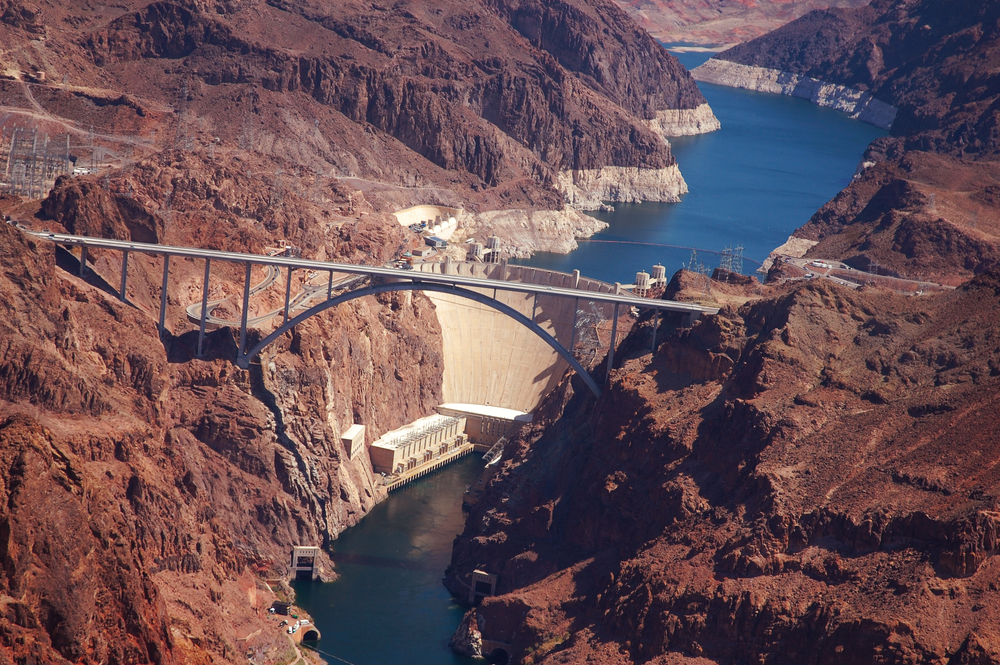The Price of River Water May Be Going Up
Posted on Categories Discover Magazine

It sounds like an advertisement for bottled water: The flowing Colorado River emerges high in the Rocky Mountains, from snows untouched by man. It tumbles down through seven states and the two largest reservoirs in the country, lakes Powell and Mead, crossing some 1,450 miles. Along the way, it winds through the Grand Canyon, a project 6 million years in the making.
But the storied river’s final flourish, to empty into the Gulf of California, doesn’t happen anymore. The once vibrant Colorado River Delta is now just a dried-up riverbed on most days. What’s left of the mighty river sits hemmed in by the Morelos Dam on the U.S.-Mexico border, which releases only a small stream.
Read More: Shipwrecks, Volcanic Ash And Lost Cities Come To The Surface In Lake Mead
The Colorado River – or more accurately, the human development that draws on the resource – has run at a deficit for decades. Forty million people rely on Colorado River water for drinking water, farm irrigation or hydroelectric power. Major Western cities such as Los Angeles and Phoenix draw heavily on the resource and its annual rhythms.
Now, thanks to years of drought and the effects of climate change, the usual river deficit has grown into a full-scale crisis. But a new accord between California, the largest user of Colorado River water; Arizona, the second largest; and Nevada will return some water to the river.
What Prompted Colorado River Negotiations
In the summer of 2022, water in Lake Mead dipped so low that it threatened to become a “dead pool” unable to feed the Hoover Dam, which could have affected power for some 40 million people.
Then in June 2022, the U.S. Bureau of Reclamation ordered southwestern states to cut their water usage by 2-to-4 million acre-feet. (An acre-foot is the amount needed to cover an acre with a foot of water.) This set off fierce negotiations between California, Arizona, and Nevada, where leaders wanted to avoid a costly legal fight with the federal government. Who was going to make these cuts, they asked? Farmers, who use 80 percent of Colorado River water or mom and pop?
By winter, the three states got lucky when heavy snowfalls brought moisture to the Rockies and eventually, Colorado. The negotiations wore on, but a weight had been lifted.
What Are the Terms of the Lower Basin Plan?
On May 22, 2023, the three states unveiled a “Lower Basin Plan” to cut 3 million acre-feet by 2026, which is a fraction per year of what the Bureau of Reclamation had originally demanded. Nevertheless, the Biden administration has backed the plan, which still requires formal approval.
“This is an important step forward towards our shared goal of forging a sustainable path for the basin that millions of people call home,” says Bureau of Reclamation Commissioner Camille Calimlim Touton in a press release.
Under the plan, the federal government will grant $1.2 billion to cities, irrigation districts and Native American tribes in exchange for cuts. The money will cover a majority of the reductions, with the rest coming through other means.
The Permanent Water Plan to Come
“This proposal protects the system in the short term so we can dedicate our energy and resources to a longer-term solution,” says Brenda Burman, head of the Central Arizona Project for the Arizona Department of Water Resources, in a statement.
A long-term solution should require cutting 3 million acre-feet a year, as Jack Schmidt – director of the Center for Colorado River Studies – told Idaho Capital Sun.
“Those forthcoming reductions will be a significant and difficult political negotiation,” he says.
It’s set to begin next week, according to a notice in the Federal Register.
Read More: Drought At Lake Powell Reveals Preserved World That Was Once Lost